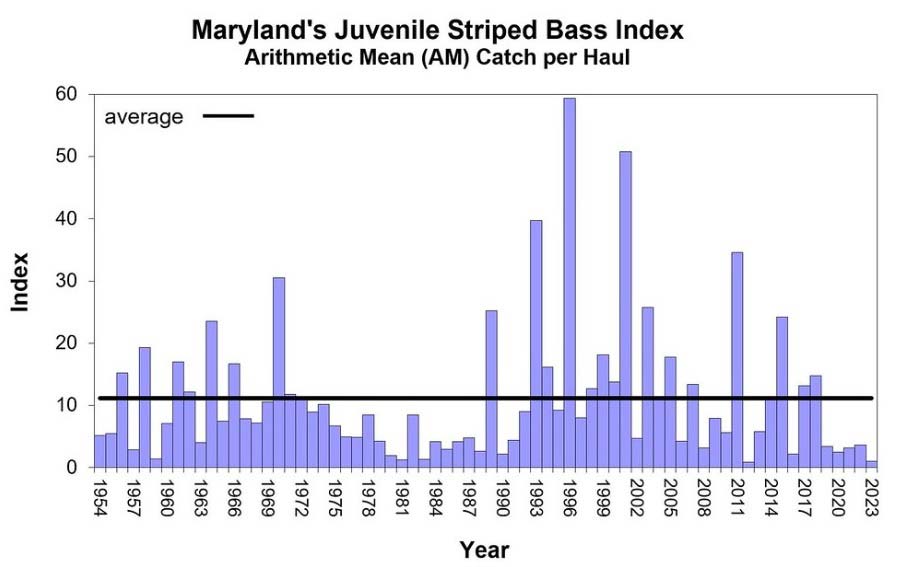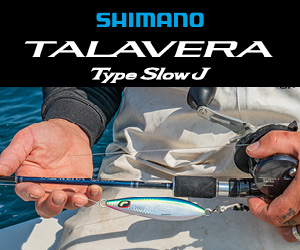On October 12, the Maryland Department of Natural Resources (DNR) announced the results of this year’s juvenile striped bass survey, tracking the reproductive success of Maryland’s state fish in the Chesapeake Bay, and results were, once again, not good. The 2023 young-of-year index is 1.0, which DNR said is well below the long-term average of 11.1.
“The warm, dry conditions in winter and spring during the past several years have not been conducive to the successful reproduction of fish that migrate to fresh water for spawning,” said DNR’s Fisheries and Boating Director Lynn Fegley. “In response, we’re working with the Atlantic States Fisheries Commission (ASMFC) to support management actions we can take now to protect striped bass and improve spawning success. The Department is also considering additional state-specific actions to increase protections within Maryland.”
In May, the ASMFC put in place an emergency measure that bars anglers from harvesting fish larger than 31 inches, a step to better protect large fish. In early 2024, the commission will vote on additional regulation changes aimed at reducing striped bass deaths caused by coastwide fishing activity, including the Chesapeake Bay.

According to DNR, striped bass spawning activity is temperature-driven and historically adult fish migrated to the Chesapeake Bay to spawn in April and May, which aligned with the seasonal arrival of zooplankton and other microscopic food sources that larval striped bass eat. However, recent winters have produced less-than-average snowfalls in the region and therefore less snowmelt to cool the rivers and streams where striped bass spawn. Research has also shown spring zooplankton production in the Bay is being altered by warmer winters.
Fishery scientists are continuing to investigate whether higher temperatures earlier in the year are affecting the survivability of juvenile striped bass, but according to Maryland’s DNR other anadromous species with similar spawning behavior such as white perch, yellow perch, and herring also experienced below-average reproduction this year.
“It’s important to remember that increasing the size of the striped bass stock does not guarantee strong reproduction,” said Fegley. “We will continue to work with other coastal states to rebuild the population so spawning can succeed when conditions are right.”
The Virginia Institute of Marine Science conducts a similar survey in the southern portion of Chesapeake Bay; young-of-the-year recruitment numbers for striped bass will also be compiled in the Delaware River (NJDEP) and the Hudson River (NYDEC).




